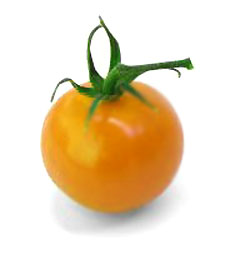

Beyond pepperoni: This White Cheddar Pizza includes bacon and walnuts. Here’s the recipe. Photo courtesy Wisconsin Milk Marketing Board.
October 2008
Last Updated April 2017
|
 |
Gourmet Pizza Recipes
Page 1: Pizza History
CAPSULE REPORT October is National Pizza Month. This most popular of American dishes started out as a primitive flatbread and cheese meal somewhere in the Mediterranean region. While pepperoni wins as America’s favorite topping, the folks at Wisconsin Milk Marketing Board—whose members make much of the great cheese that tops your pizzas—have developed some groovy recipes that let you defer the tried-and-true pepperoni, meatballs, mushrooms, onions and pepper for another day. So call your friends, tell them to bring the craft beer or artisan soda, and celebrate National Pizza Month in gourmet style. But before you hit the recipes, chow down on the history of pizza.
This is Page 1 of a seven-page article. Click the black links below to visit other pages.
The History Of Pizza
The history of pizza as we know it is relatively recent, given how old flat breads and cheese are in man’s cuisine. As far back as 8000 B.C.E., man knew how to mix flour with water into dough, season it with herbs and heat it on a hot stone to create a flat bread (see the history of bread). The earliest cheesemaking began about 5500 B.C.E. The pizza, if it is defined as baked flat bread covered with cheese, could have been invented by the Greeks, the Phoenicians, the people who would become the Romans or anyone in the greater Mediterranean area of the time.
In fact, while we think of pizza as a quintessential Italian food, food historians credit the idea of using bread as a “plate” for an assortment of toppings and seasonings to the Greeks, who ate flat round bread (plankuntos), topped by stews, thick broth, meats, vegetables and fruits. Just as it is today, it was a thrifty, convenient and tasty meal for the working man and his family, requiring no additional plates or utensils. One can think of pizza originating as an “edible plate”—a true convenience food. (Injera, the Ethiopian flatbread, is still used for this purpose and is a mainstay of Ethiopian cuisine—most dishes are prepared as toppers for injera.)
With the constant traffic between the worlds of Greece and Rome, plankuntos made its way to what is now Italy, where it became known as pizza. The word “pizza” may have derived from the Latin word “pinsa,” which means flatbread. Pizza became popular street food, sold from open-air stands by vendors, typically young boys who would walk around the city with small tin stoves on their heads, calling out to “hawk their wares” to customers. The pizzas of the time were simple but tasty, topped with olive oil and fresh herbs, not unlike focaccia. Sometimes, some grated sheep’s cheese was added. Pizza was still food for the poor, but soon became a tourist attraction.
How Topped Flatbreads Became Modern Pizza
One of the key elements that turned the baked flatbreads with toppings into what we know today as pizza was the tomato, which was brought to Europe from the Americas in the 16th century. This was the yellow cherry tomato. As a member of the Nightshade family of plants, it was believed by many Europeans to be poisonous, and was appreciated purely as a decorative houseplant.
However, during a famine in the 18th century, the starving poor gambled and ate the fruit. No one was poisoned; in fact, a delicious new foodstuff was discovered. The poor in the area around Naples then added tomato to their flatbread, often serving it as their main meal with melted cheese and/or anchovies. Thus the pizza was born. (So was tomato sauce for pasta and other tomato-based dishes.)
|

All of today’s tomato varieties were bred from the original tomato, a yellow cherry tomato that grew wild in Peru. Photo by Sophie | SXC. |
What happened next? The arrival of mozzarella, as you’ll see on the following page.
Continue To Page 1a: The History Of Pizza, Continued
Return To The Article Index Above
Recipes courtesy of Wisconsin Milk Marketing Board. Other material
Lifestyle Direct, Inc. All rights reserved. Images are the copyright of their individual owners.

|
|





